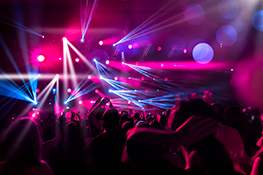Stage Lighting Trends 2024: What’s Hot & What’s Not
Sustainable Stage Lighting: The Eco-Conscious Revolution
Sustainability is no longer a niche concern; it’s a core value driving innovation across industries, and stage lighting is no exception. 2024 sees a surge in demand for energy-efficient LED fixtures with longer lifespans, reducing both operational costs and environmental impact. Manufacturers are focusing on recyclable materials and minimizing packaging waste. Look for fixtures boasting high lumens per watt ratings and certifications like Energy Star to demonstrate their commitment to eco-friendliness. This trend aligns perfectly with venues and productions striving for greener credentials, attracting environmentally conscious audiences and sponsors.
Data-Driven Lighting Control: Smart Stage Management
The integration of data and AI in stage lighting is rapidly transforming how shows are designed, programmed, and executed. Smart lighting systems leverage data analytics to optimize energy usage, predict equipment failures, and even personalize lighting experiences based on audience response. This involves sophisticated software and networking capabilities that allow for remote control, real-time monitoring, and seamless integration with other production elements. The benefits extend beyond efficiency; data-driven control enhances creativity, allowing designers to explore more complex and dynamic lighting schemes with greater precision.
Immersive Lighting Experiences: Beyond the Proscenium Arch
The demand for immersive and interactive experiences is pushing the boundaries of traditional stage lighting. This year, we’re witnessing a rise in the use of projection mapping, augmented reality (AR), and virtual reality (VR) technologies to create truly enveloping environments for the audience. Lighting is no longer confined to the stage; it extends into the auditorium, transforming the entire space into a dynamic element of the performance. This calls for versatile fixtures capable of blending seamlessly with digital projections and interactive elements, creating a unified and captivating spectacle.
Miniaturization and Versatility: Smaller Fixtures, Bigger Impact
While powerful spotlights still hold their place, 2024 emphasizes smaller, more versatile fixtures that offer greater flexibility and design freedom. Compact LED units with multiple color options and effects are gaining popularity, allowing lighting designers to create nuanced lighting schemes with greater precision and detail. These smaller fixtures are easier to integrate into set designs, creating more dynamic and less obtrusive lighting solutions. The trend favors fixtures that can be easily rigged, repositioned, and adapted to different performance needs.
The Continued Rise of LED: Enhanced Color Accuracy and Control
LED technology continues to dominate the stage lighting market, but 2024 sees refinements in color accuracy, rendering capabilities, and control. Advancements in LED chip technology are delivering richer, more saturated colors with a wider color gamut. This allows for greater creative freedom and a more faithful reproduction of intended hues. Improved control protocols allow for more precise color mixing and dynamic effects, further enhancing the creative potential of LED fixtures.
What’s Out?
While innovation drives the industry forward, some trends are fading. The reliance on large, energy-intensive incandescent and halogen fixtures is declining rapidly, replaced by their more efficient LED counterparts. Similarly, complex and inflexible lighting control systems are giving way to more intuitive and data-driven solutions. Outdated technologies lack the versatility and efficiency needed to meet the demands of modern productions, making them less desirable and economically viable.
The stage lighting landscape is constantly evolving. By embracing these trends, lighting designers and venues can create more captivating performances, improve operational efficiency, and contribute to a more sustainable future for the industry.


 Auditorium Construction Services
Auditorium Construction Services 